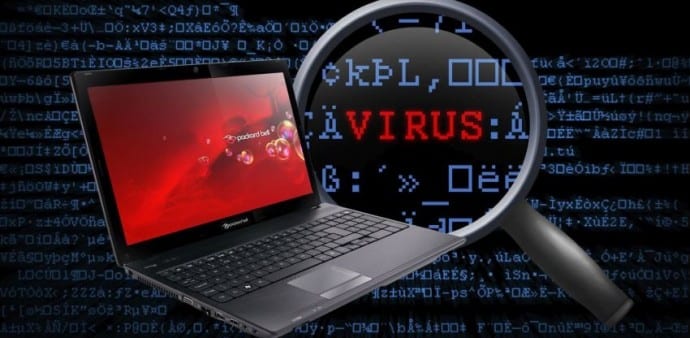Table Of Contents
Read about the 5 deadliest computer viruses which haunted computer users
Computer viruses can be dreadful that might cause extensive damage to your innocent device. It can significantly disrupt your system’s performance and has the potential to wipe out everything on your hard disk.
So, what is a computer virus? A computer virus is a malware program that, when executed, replicates by inserting copies of itself (possibly modified) into other computer programs, data files, or the boot sector of the hard drive. When this replication succeeds, the affected areas are then said to be “infected”, making your device helpless and sick.
Also, ever since people could write code there have been individuals known as hackers who have sought to make that code malicious in nature. While some pranksters created virus-like programs for large computer systems, it was really the introduction of the personal computer that brought computer viruses to the public’s attention.
Computer viruses have inundated the computer user for a long time now. Here are five most dangerous computer viruses of all time:
1. ILOVEYOU
This was perhaps the most dangerous computer virus ever created that in the form of a worm — it was a standalone program capable of replicating itself. Known as ILOVEYOU, this virus initially traveled the Internet by e-mail and managed to crash PCs all across the world. To make it even more alluring, the subject of the e-mail said that the message was a love letter from a secret admirer. An attachment in the e-mail was what caused all the trouble. The original worm had the file name of LOVE-LETTER-FOR-YOU.TXT.vbs. The moment someone opened the file, the virus emailed itself to the first 50 contacts available in the PC’s Windows address book. The virus caused a total damage of around $10 billion affecting almost 10% of the world’s PCs connected to the Internet.
2. Melissa
Melissa was the first mass-mailing macro virus for the new age of e-mailing which became the breaking news across the world on March 26, 1999. Based on a Microsoft Word macro and built by David L, Melissa was spread in the form of an email attachment by the name “list.doc.” When the attachment was clicked upon, the virus replicates itself and seeks for the Microsoft Outlook address book to e-mail itself to the first 50 names on the list with a message, “Here is that document you asked for…don’t show anyone else. ;-)” Later on, FBI arrested David L and slapped him with a fine of $5000 for unleashing the fastest virus of its time.
3. My Doom
My Doom explored its way to the malware world on 26th January 2004 and sent a shockwave around the world, as it scattered exponentially via e-mail through email with random addresses of senders and subject lines. My Doom destroyed the cyber world by activating a tremendous denial of service attack that infected close to about two million PCs. It transmitted itself in a particularly deceitful manner through e-mail as what receiver would first reckon to be a bounced error message as it reads “Mail Transaction Failed.” But, as soon as the message is clicked upon, the attachment is executed and the worm is transferred to email addresses found in the user’s address book. The damage caused by this fastest-spreading mass mailer worm was a whopping $38 billion.
4. Code Red
It debuted in late 2001 taking advantage of the Microsoft Internet Information Server’s flaw. The variations of the virus plagued the Internet for several months. The interesting thing about this deadly virus is, it did not require you to open an e-mail attachment or run a file; it just required an active Internet connection with which it ruined the Web page that you opened by displaying a text “Hacked by Chinese!” And in less than a week’s time, “Code Red” brought down more than 400,000 servers including the White House web server. This virus caused a total damage of approximately $2.6 billion dollars by hitting almost one million PCs.
5. Sasser
The 2004 worm virus affected Windows OS primarily, and was devastating to many critical infrastructures. It didn’t spread through e-mail unlike other viruses. Instead, once the virus infected a computer, it looked for other vulnerable systems. It contacted those systems and instructed them to download the virus. The virus would scan random IP addresses to find potential victims. The virus also altered the victim’s operating system in a way, making it even hard to reset without cutting the power. Sasser functioned by attacking the security controller Local Security Authority Subsystem Service, as it had a buffer overflow vulnerability. The worm affected hospitals, public transportation, airlines, news agencies and much more. After one million infections, there was an estimated 18 billion dollars in damage recorded.

